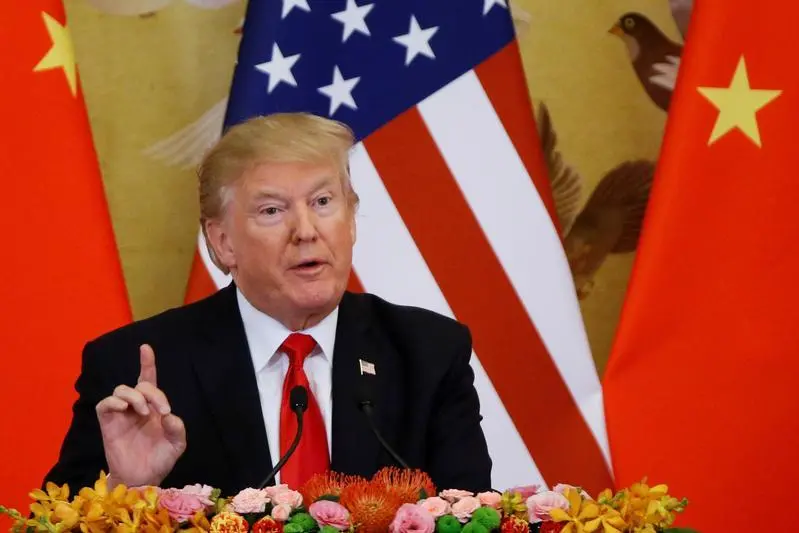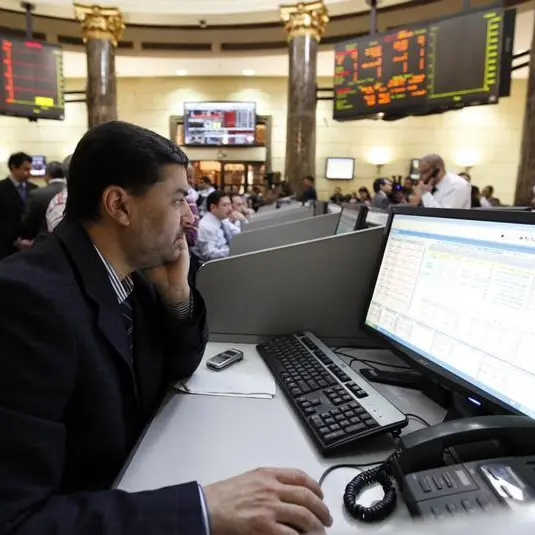PHOTO
SAN FRANCISCO/NEW YORK - Donald Trump’s Twitter feed is putting the Federal Reserve and U.S. employment reports in the shade. On Thursday he said he would impose a 10% levy on another $300 billion in Chinese goods, which if implemented would mark a tax on essentially all imports from the People’s Republic. The latest trade tactic rattled markets more than the U.S. central bank’s first rate cut in more than a decade on Wednesday, as well as overshadowing steady but unexciting employment data on Friday.
The U.S. president blamed Beijing for failing to follow through on its promise to buy more farm products and stop the sale of fentanyl, implicated in America’s opioid crisis. Those are two issues important to his base. His tweets sent the S&P 500 Index down around 1% for the day, and triggered what Morgan Stanley pegged as the largest Treasury-bond price rally in over a year, a sign of investors seeking safe holdings.
Though Fed Chairman Jerome Powell caused some volatility with his efforts to explain where policy rates might go next, Trump’s direction on trade matters more to the outlook for now. Some of his prior actions suggest he’s desperate for a deal with Beijing. On Thursday he described protests in Hong Kong as “riots,” effectively giving China license to crack down. Earlier his administration stalled $8 billion in fighter-jet sales to Taiwan. Trump is also giving both sides time, with a Sept. 1 deadline – and he has threatened and then postponed fresh tariffs before.
The path forward also feeds into his 2020 re-election bid. The president is looking to shore up support among farmers reeling from a record number of bankruptcies. Agricultural exports to China are expected to plummet by about 70% in the 2019 fiscal year from the level typical during Barack Obama’s presidency, according to the U.S. Agriculture Department.
While hostilities continue, however, Trump’s trade war with Chinese President Xi Jinping is creating uncertainty, partly leading to the Fed’s precautionary rate cut. And while the U.S. unemployment rate remained unchanged in July, some areas like factory work are seeing weakness compared to last year. The Alliance for American Manufacturing blamed the White House’s “unforced errors” and “erratic trade policy.” Trump’s unpredictable tweets are the new Fed statements and jobs reports.
CONTEXT NEWS
- U.S. President Donald Trump said in a tweet on Aug. 1 that he would impose a 10% tariff on $300 billion worth of Chinese goods on Sept. 1 and could raise levies on imports further if China’s President Xi Jinping fails to strike a trade deal quickly. The S&P 500 Index closed down around 1%, reversing earlier gains, while government bond prices rose and yields fell.
- Mexico supplanted China as America’s top trading partner for the first time since 2005, according to figures for the first six months of 2019 released from the Commerce Department on Aug. 2.
- The U.S. Bureau of Labor Statistics said on Aug. 2 that total nonfarm employment rose by 164,000 in July, with the unemployment rate unchanged at 3.7%.
- The Federal Reserve’s rate-setting committee on July 31 cut its policy overnight interest rate for the first time since 2008, to a target range of 2%-2.25%. The S&P 500 closed down just over 1% that day.
(Editing by Richard Beales and Amanda Gomez) ((gina.chon@thomsonreuters.com; jennifer.saba@thomsonreuters.com; Reuters Messaging: gina.chon.thomsonreuters.com@reuters.net; jennifer.saba.thomsonreuters.com@reuters.net))












